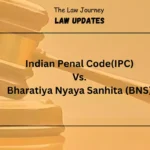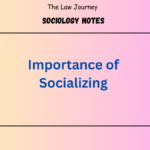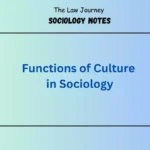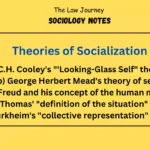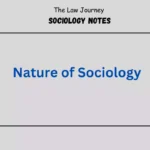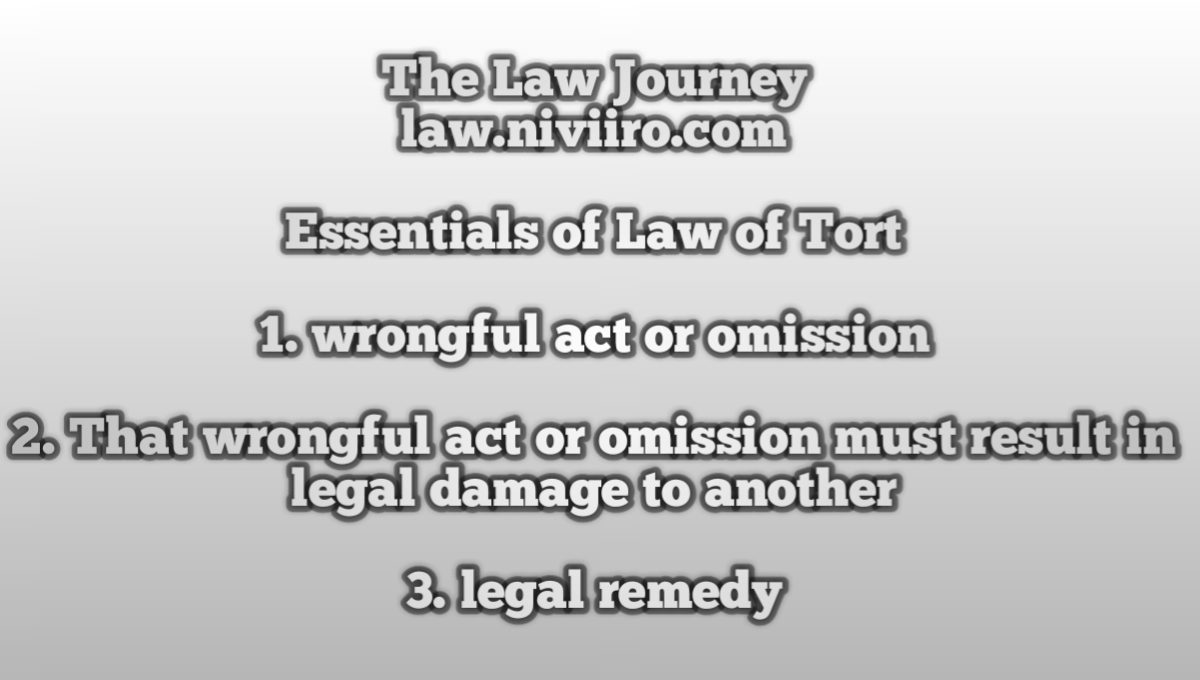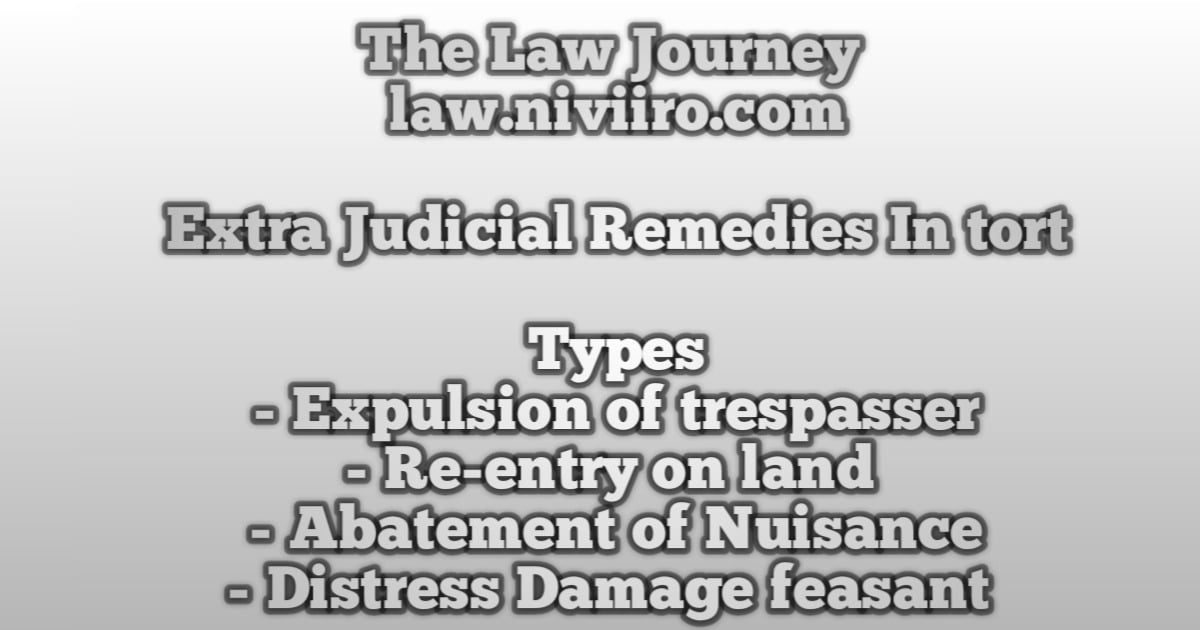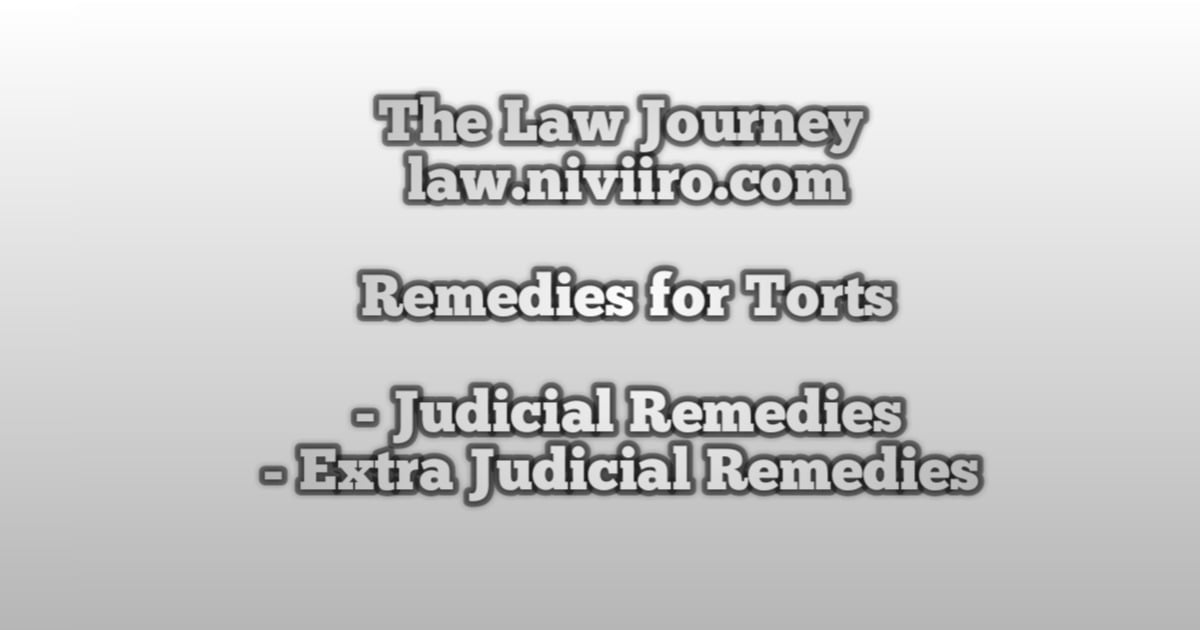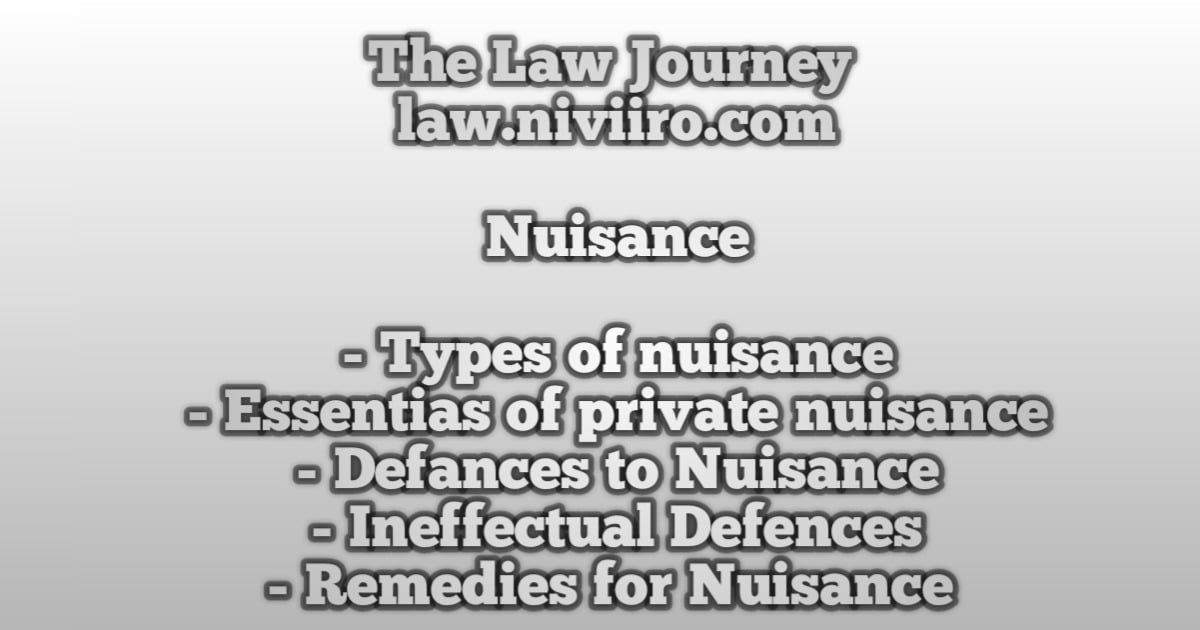Essentials of Law of Tort, When the interest is protected, it gives rise to a legal right which in turn gives rise to a corresponding legal duty. Some legal rights are absolute and its mere violation leads to the presumption of legal damage. To constitute a tort or civil injury following ingredients are necessary:
(a) A wrongful act or omission on the part of a person;
(b) That wrongful act or omission must result in legal damage to another; and
(c) The wrongful act must be of such a nature as to give rise to a legal remedy in the form of an action for damages.
(a) A wrongful act or omission on the part of a person
Act or Omission In order to make a person liable for a tort, he must have done some act which he was not expected to do, or, he must have omitted to do something which he was supposed to do. Either a positive wrongful act or an omission which is illegally made, will make a person liable.
For example, A commits the act of trespasser publishes a statement defaming another person, or wrongfully detains another person, he can be made liable for trespass, defamation or false imprisonment, as the case may be.
Similarly, when there is a legal duty to do some act and a person fails to perform that duty, he can be made liable for such omission.For example, if a corporation, which maintains a public park, fails to put proper fencing to keep the children away from a poisonous tree and a child plucks and eats the fruits of the poisonous tree and dies, the Corporation would be liable for such omission.
Similarly, in General Cleaning Corporation Ltd. v. Christmas, (1953) A.C. 180 : (1952) 2 All E.R. 1110. if the Municipal Corporation, having control of a clock tower in the heart of the city does not keep it in proper repairs and the falling of the same results in the death of a number of persons, the Corporation would be liable for its omission to take care in the matter. In the same way, an employer failing to provide a safe system of work, would be liable for the consequences of such an omission.
(b) Legal Damage
The test to determine the liability under the law of torts is to see whether any legal right of the plaintiff has been violated or not. If a legal right is violated, then it does not matter that the plaintiff has suffered any loss or not.
the legal damages is illustrated by two maxims namely;
(i) Injuria sine damnum
This maxim means violation of a legal right without causing any harm, loss or damage to the plaintiff. Thus, it is the behaviour, which is actionable as a tort. It is always actionable as legal wrongs entail a remedy. Every injury imports damage. Infringement of private right is actionable per se. No actual loss or damage is required to be proved by the plaintiff.
Leading Case: ASHBY v WHITE (1703) 2 Lord Raym 938 In this case, the plaintiff succeeded in his action, even though the defendant’s act did not cause any damage. The plaintiff was a qualified voter at a parliamentary election, but the defendant, a returning officer, wrongfully refused to take plaintiff’s vote. No loss was suffered by such refusal because the candidate for whom he wanted to vote won in spite of that. The defendant was held liable.
(ii) Damnum sine injuria
It means that the plaintiff may suffer actual or substantial loss without any violation or infringement of legal right and therefore no action lies in such cases. This is generally so when the exercise of legal right by one results in consequential harm to the other, even though the injury is intentional. It is never actionable, as moral or social wrongs have no remedy. Similarly, hurt to religious feelings is not an actionable tort.
In Gloucester Grammar School case (1410) Y.B. Hill, 11 Hen, the defendant, a schoolmaster, set up a rival school to that of the plaintiffs. The boys from the plaintiff’s school flocked to the defendant’s. Because of the competition the plaintiffs had to reduce their fees. Held that the plaintiffs had no remedy for the loss thus suffered by them.
Distinction Between Injuria sine damnum and Damnum sine injuria
| Injuria sine damnum | Damnum sine injuria |
|---|---|
| 1. It means violation of a legal right without causing any harm, loss or damage to the plaintiff. | 1. It means actual or substantial damage without infringement of a legal right. |
| 2. The defendant acts illegally to infringe legal right of the plaintiff. | 2. The defendant causes harm to the plaintiff by acting legally. In other words, exercise of legal right by one results in consequential harm to the other. |
| 3. It is always actionable. | 3. It is never actionable. |
| 4. It contemplates legal wrongs where there is a remedy. | 4. It contemplates moral or social wrongs without any remedy. |
(c) Legal Remedy
In tort, the wrongful act must come under the category of wrongs for which the remedy is a civil action for damages. Legal remedy is the third essential for an action in tort. A tort is a civil injury, but all civil injuries are not torts. The essential remedy for a tort is an action for damages but there are other remedies also for example injunction may be obtained in addition to damages in certain cases of wrongs or an action by the plaintiff himself without going to the court i.e. self-help.
Ubi Jus Ibi Remedium
The law of torts has developed from the maxim “ubi jus ibi remedium” i.e. there is no wrong without a remedy, Jus, means ‘the legal authority to do or to demand something’ and ‘remedium’ signifies the right of action or the means given by law for the recovery or assertion of a right. We can also look upon this maxim which says-‘Where there is a right, there is a remedy’.
In the case, Ashby v. White, Holt, C.J., laid down that ‘if the plaintiff has a right he must of necessity have a means to vindicate and maintain it, and a remedy if he is injured in the exercise of enjoyment of it, and indeed it is a vain thing to imagine a right without a remedy for want of right and want of remedy are reciprocal’.
Related Post
What do you mean by ‘Injuria sine damnum‘ ?
This maxim means violation of a legal right without causing any harm, loss or damage to the plaintiff.
What are the Essentials of Law of Tort’s ?
(a) A wrongful act or omission on the part of a person;
(b) That wrongful act or omission must result in legal damage to another; and
(c) The wrongful act must be of such a nature as to give rise to a legal remedy in the form of an action for damages.
Meaning of ‘Ubi Jus Ibi Remedium‘ Maxim ?
The law of torts has developed from the maxim “ubi jus ibi remedium” i.e. there is no wrong without a remedy, Jus, means ‘the legal authority to do or to demand something’ and ‘remedium’ signifies the right of action or the means given by law for the recovery or assertion of a right. We can also look upon this maxim which says-‘Where there is a right, there is a remedy’.
Distinction Between Injuria sine damnum and Damnum sine injuria ?
1. Injuria sine damnum means violation of a legal right without causing any harm,or damage to the plaintiff whereas Damnum sine injuria means actual or substantial damage without infringement of a legal right.
2. Injuria sine damnum is always actionable whereas Damnum sine injuria is never actionable….
References
- Law of Torts by RK Bangia (22nd Edition)
- Ratanlal and Dhirajlals Law of Tort book
- Universals Law of Torts
- A.K. Jain law of torts

